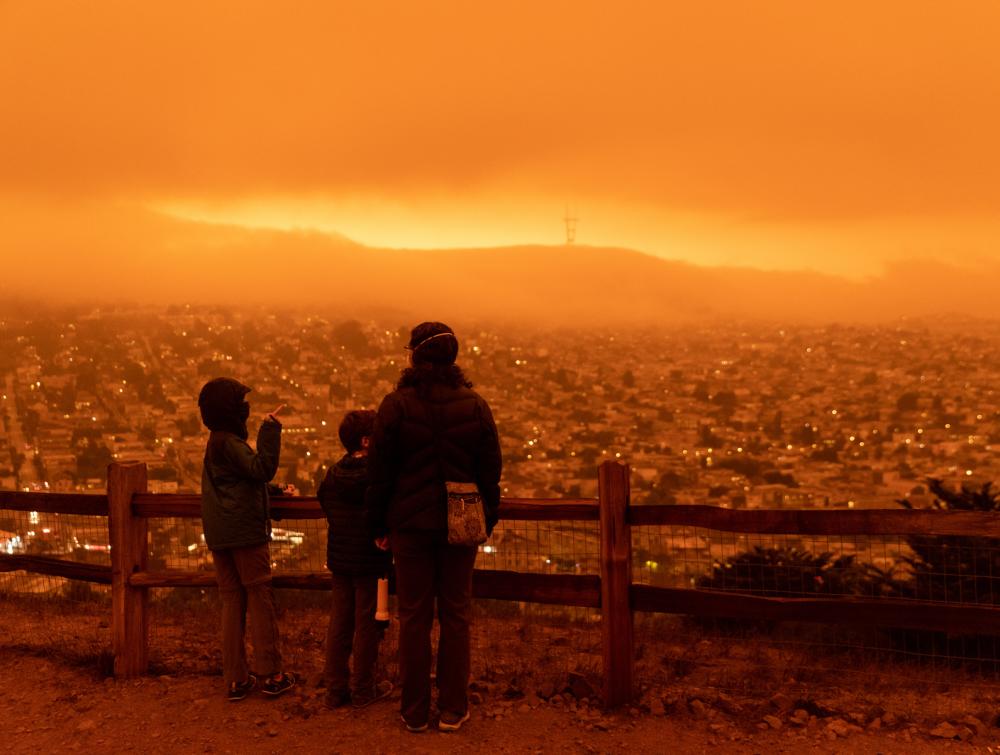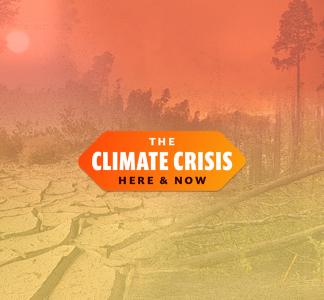UPDATE: News of Congress’ climate deal encouraging, but Biden can act on climate with these 10 immediate steps

Sunlight glows orange due to smoke from wildfires in California in 2020
iStock
Opportunities to exercise full power of White House, agencies
UPDATE (7/28/22): Sen. Joe Manchin and Senate Majority Leader Chuck Schumer recently announced they’ve reached a deal on a bill that addresses climate change. News that it commits to a 40-percent reduction in climate emissions by 2030 is extremely encouraging.
While we continue to assess how well and the extent to which the bill advances a just and equitable renewable energy transition and makes public lands part of the climate solution, we’re heartened to see public lands and environmental justice do have a place in it. But to fully embrace the potential of public lands as part of the climate solution we still need the Biden administration to take the strong actions that it can right now.
President Biden can bring to bear the full power of the White House and federal agencies, including steps like taking the Arctic Refuge off the market and ending new oil and gas drilling in U.S. waters.
Specifically, we’re asking President Biden to urgently pursue these 10 actions:
-
Establish a mandate to manage public lands and waters in a way that makes them part of the climate solution.
The Department of the Interior should reorient its management of public lands with a focus on climate and conservation. Oil, gas and coal from public lands and waters currently account for nearly one-quarter of U.S. climate emissions; we need a rapid and fair phase out of fossil fuel development in those areas, and to ramp up renewable energy instead. All this must be done while conserving our best carbon-storing lands and critical habitat that species need to adapt in the face of climate change.
-
Cancel oil and gas leases in the Arctic National Wildlife Refuge.
In addition to trampling on the human rights and culture of Indigenous peoples, oil and gas drilling in the Arctic Refuge issued during the Trump years would add even more fossil fuels to the cycle of extraction and consumption that is driving climate change and degrading our public lands.
-
Put an end to ConocoPhillips’ proposed Willow drilling project in the Western Arctic.
The massive oil development project would add more than 250 million metric tons of CO2 to the atmosphere over the next 30 years and open the floodgates to additional oil development in the region, harming the wildlife and habitat of this vital landscape.
-
Don’t lease for oil or gas in the Gulf of Mexico and in Alaska’s Cook Inlet.
The Biden administration recently released a proposed program for offshore oil and gas leasing for the next five years, indicating they may end up encouraging more drilling on public waters....or they could choose not to. If they do move forward with leases it will be totally at odds with their stated climate goals. The only acceptable choice is no leasing at all.
-
Strengthen National Environmental Policy Act regulations to better protect communities, wild places and our climate.
The Trump administration seriously weakened regulations governing use of the National Environmental Policy Act, which requires the federal government to analyze and be transparent about potential environmental and health consequences of proposed projects. The Biden administration has already restored some key provisions, and they should go further by creating rules that ensure NEPA analyses fully account for environmental justice impacts and will help communities' equitable transition to renewable energy.
-
Continue rapid and responsible deployment of renewable energy on public lands and waters.
Public lands and waters have some of the nation’s best solar, wind and geothermal resources, but they currently account for less than 5 percent of renewable energy capacity in the U.S. The Biden administration has accelerated renewable energy projects, and we encourage them to keep it up.
-
Protect old-growth and mature forests that absorb carbon pollution.
Conserving our oldest forests and ensuring they stay intact provides more net carbon storage than any other use of land in the U.S., and the biggest, oldest trees do more than their fair share of that work. Forests also provide clean air, water and critical wildlife habitat.
-
Prioritize conservation on Bureau of Land Management lands.
The Bureau of Land Management has the potential to protect 100 million acres of land including wildlife habitat, migration corridors and important cultural areas, contributing to the conservation goal of protecting 30 percent of U.S. lands and waters by the year 2030.
-
Designate and expand national wildlife refuges and national monuments.
Under these designations, the Biden administration has the authority to protect wildlife habitat; significant cultural and historic sites; and important places for communities to equitably enjoy the outdoors, including near major cities where most people—and most people of color, who have disproportionately less access to nature and bear more environmental hazards—live.
-
Identify and protect migration corridors that wildlife needs to adapt and endure the climate crisis.
With climate change warping habitat and forcing animals and plants to new places—for example, moving north or to higher elevations as their old homes heat up—it’s vital we make sure they have clear and intact paths (“corridors”) of wildlands to do so.
Blog series: Public lands & the climate crisis
Extreme weather is battering national parks, forests and other public lands
Dried mud at Joshua Tree National Park by Brad Sutton, NPS; Hurricane Sandy storm damage at Chincoteague National Wildlife Refuge by USFWS, Flickr; Las Conchas Fire by Jayson Coil, Flickr; Sun by Johan Elder, Flickr
United Nations climate change report: "We have solutions"
Shashank/Unsplash



